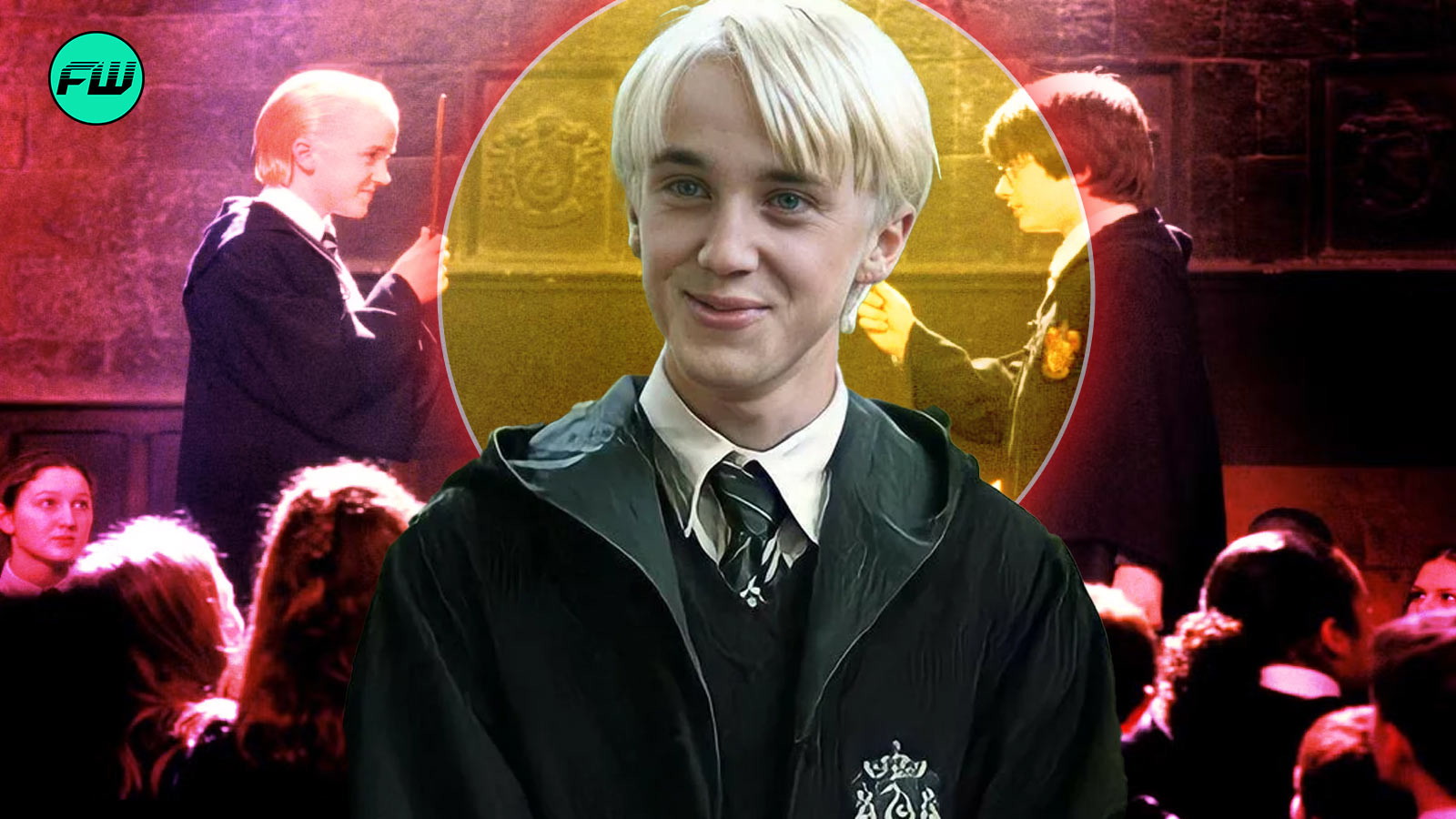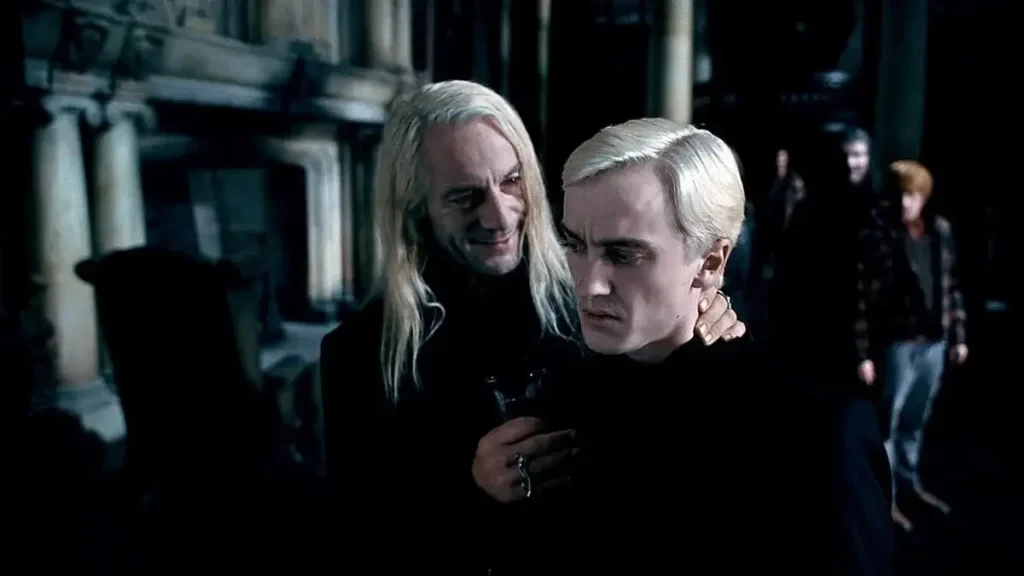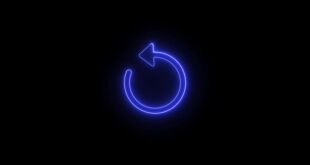
Draco Malfoy may have strutted around Hogwarts like a platinum-blond bully, but we all know that behind his sneer was a scared boy trapped in a very dark game. Much like Tom Hiddleston’s Loki, Draco was neither the villain nor the hero of the Harry Potter franchise. Instead, he was painfully stuck somewhere in between.
While the Harry Potter fandom often debates Snape’s motives or praises Neville’s bravery, Draco Malfoy’s story quietly unravels in the shadows. But what if we told you that his so-called failures—his hesitations, his fears, his refusal to act—were actually the moments that saved him? Because sometimes, not doing something is the bravest choice of all.
The moments where Draco Malfoy failed as a Death Eater
Let’s be real—Draco Malfoy was that smug kid at Hogwarts with the perfect hair, an endless supply of snarky comments, and the kind of confidence only pure-blood privilege could buy. He bullied first-years, mocked Hermione’s blood status, and turned every interaction with Harry into a dramatic showdown.
Yet, what most readers fail to notice is that, behind all that swagger was a boy drowning in expectations he never signed up for. While Draco acted like he had control, the truth is, he had none. The minute Voldemort took over the Malfoy home, Draco stopped being a bratty schoolboy and became a pawn in a war far bigger than him.
Draco didn’t choose to be a Death Eater—he was forced into it as punishment for his father’s failures. Voldemort wanted to humiliate the Malfoys and literally end their family. So, what better way than to assign a child a suicide mission? Draco was ordered to kill Dumbledore, not because he was capable, but because Voldemort expected him to fail.
And in that expectation, Voldemort revealed his cruelty—he wasn’t giving Draco a task; he was handing him a death sentence. Yet, even as he plotted and schemed with poisoned necklaces and cursed cabinets, Draco couldn’t bring himself to become the killer Voldemort wanted him to be. Remember the unforgettable night at the Astronomy Tower?

That night, Draco was asked to corner Dumbledore, with wand in hand, heart pounding—and eventually end his life. But we all know how it unfolded. He not only hesitated with tears in his eyes, but also lowered his wand. He failed to kill Dumbledore as a Death Eater (much to Voldemort’s expectations).
Turns out, even though Draco had every reason to follow through (since his family’s lives were at stake), he still couldn’t kill Dumbledore. That theme repeated again and again. At Malfoy Manor, when Harry’s face is swollen and unrecognizable, Draco doesn’t confirm his identity. Even though he’s being watched, and is under pressure—he still chooses to save the Golden Trio.
Even at the Room of Requirement, he tries to stop Crabbe from unleashing deadly Fiendfyre. And during the Battle of Hogwarts, he doesn’t fight—he hides. It might look like cowardice to some, but these moments are Draco’s quiet rebellion. He failed Voldemort not once, but over and over again. And in that failure, he unknowingly saved pieces of himself that were still good.
Draco’s incompetence became his redemption in the Harry Potter franchise
The most overlooked aspect about Draco Malfoy comes in the aftermath of the Battle of Hogwarts, when Harry testified about his innocence in Albus Dumbledore’s death, to the Ministry of Magic. Draco lowering his wand wasn’t a dramatic act, but it’s a powerful one. Because that single gesture tells us everything we need to know about Draco.
Draco may have failed Voldemort’s mission. But that failure was his only real victory. Because for the first time, Draco chose not to follow the dark path set before him. Later, when captured and brought to Malfoy Manor, the Golden Trio’s lives once again hang by a thread. But Draco doesn’t give them away. With reluctance and fear, Draco refused to identify Harry.
That silence is not apathy—it’s defiance. Quiet, hesitant defiance from a boy who once fantasized the idea of being a powerful Death Eater, without realizing the horrifying reality of serving Voldemort. So while we talk a lot about characters who stood for what’s right—Neville, Luna, even Snape—Draco’s redemption doesn’t come from loud acts of rebellion.
However, it does come from his refusal to participate in crimes, his failure to commit murder, his hesitation to follow orders, and his silence when it could have spelled death for others. It’s the kind of redemption arc that’s messy, quiet, and painfully real. He was raised to be a villain but ended up being a very confused teenager who didn’t want to kill anyone. And sometimes, that’s enough.

By the end of the war, Draco isn’t praised, celebrated, or remembered like the others. But Harry sees him. He knows that Draco didn’t fight—but also didn’t destroy. And that’s why, during the epilogue, there’s no bitterness between them—just a nod. Even though Draco never switched sides, he did walk away from the worst parts of his past.
And let’s not forget that when Draco silently battled against Voldemort with his incompetence, he was just a teenager. So, for a boy of such tender age, his failure to act wasn’t weakness; it was resistance. And in the end, it was through Draco Malfoy’s redemption arc, J.K. Rowling taught that not everyone can be brave as Harry, but even the quietest defiance can still be heroic.
Harry Potter films are currently streaming in the US on HBO Max.
This post belongs to FandomWire and first appeared on FandomWire
